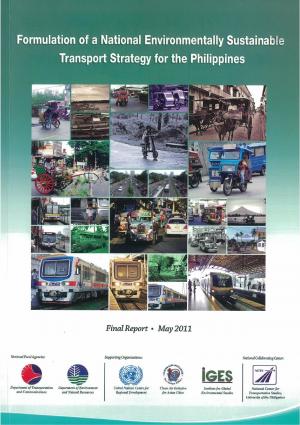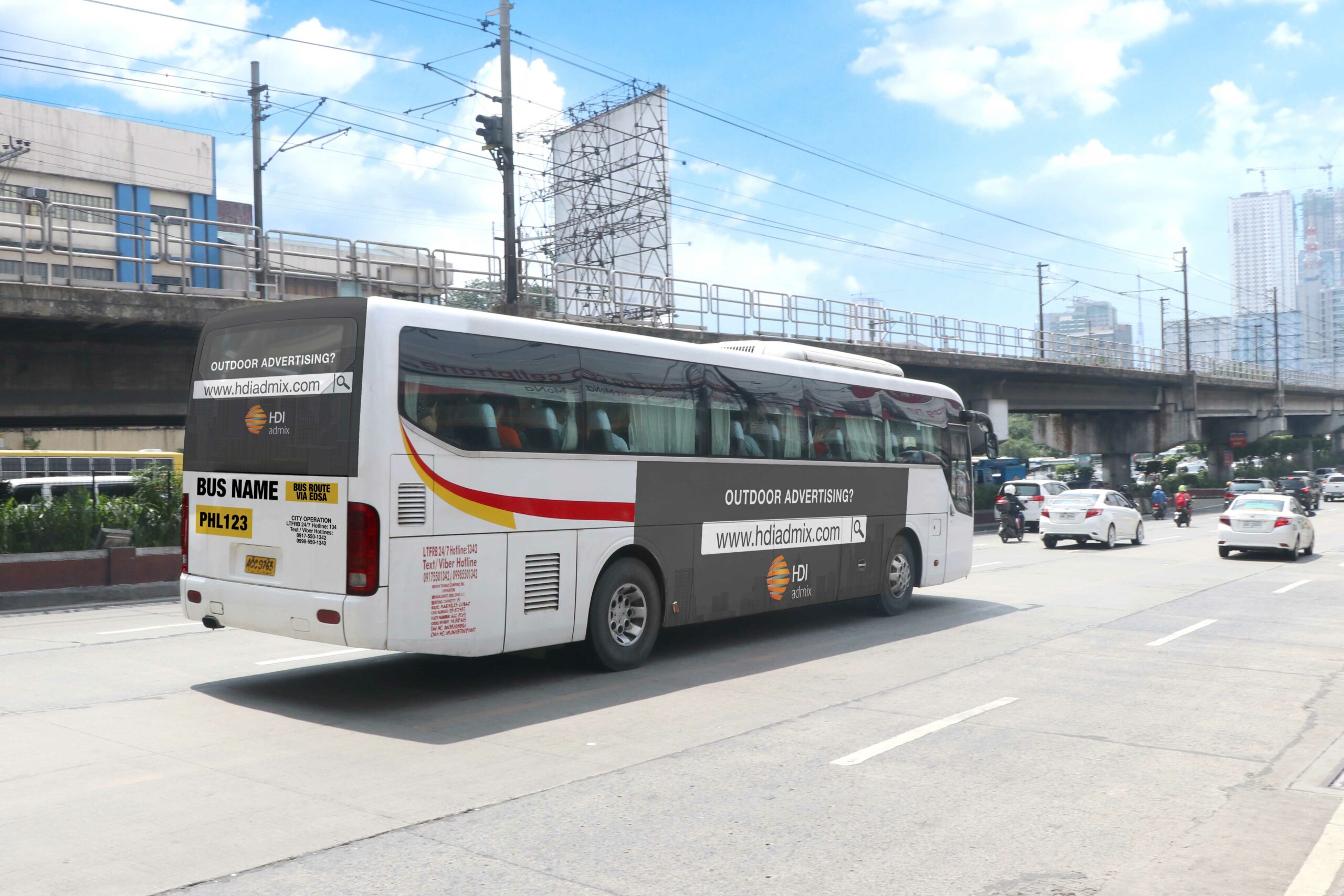Top Advantages of Transit Advertising Philippines for Companies
Top Advantages of Transit Advertising Philippines for Companies
Blog Article
Comprehending the Role of Transit Marketing in Enhancing Brand Visibility and Consumer Involvement
Transit advertising has actually become a pivotal component in the advertising landscape, using distinct opportunities for brand names to raise their visibility and engage customers properly. With the capability to get to a captive and varied audience during their daily commutes, these marketing approaches are not simply concerning visibility; they are about developing significant links with potential consumers. As we explore the complex benefits and cutting-edge approaches within transit advertising and marketing, it comes to be vital to think about exactly how these components collectively affect consumer perception and actions, raising concerns about their long-term effect on brand name loyalty.
Interpretation of Transportation Advertising And Marketing
Transportation advertising and marketing describes the practice of advertising products, solutions, or brands with advertisements placed around public transport systems. This form of marketing encompasses a selection of positionings, including posters on trains and buses, electronic screens at transportation stations, and covers on the exterior of vehicles. It intends to get to a diverse target market, exploiting on the high foot website traffic related to public transportation.
Transportation marketing is strategically placed to capture the interest of commuters, who usually invest considerable time waiting or traveling. By integrating ads into the day-to-day routines of individuals, brand names can produce an enduring impression and foster brand name recognition. The medium is especially effective in city environments, where mass transit is a main mode of traveling.
Furthermore, transit marketing can help with localized targeting, allowing organizations to reach details demographics based on transit routes and terminal places. As urban populaces expand and using public transport boosts, this advertising and marketing method has actually gained prestige as a crucial component of incorporated advertising methods. The dynamic nature of transportation advertising, integrated with its capacity to engage consumers in a captive environment, highlights its value in contemporary marketing methods.
Advantages of Transportation Marketing
The efficiency of transportation advertising hinges on its capability to provide a wide range of benefits to brands seeking to improve presence and engagement. Among the key advantages is the considerable reach it uses; transportation advertisements can effectively target diverse demographics throughout metropolitan areas, getting to both commuters and pedestrians alike. This wide direct exposure substantially boosts brand understanding.
One more advantage is the high regularity of perceptions. As transit vehicles travel along established paths and quit at multiple places, they develop recurring direct exposure that strengthens brand messages. This frequency promotes knowledge, which is vital in consumer decision-making.
Transportation advertising is likewise cost-efficient compared to various other media platforms. Provided its large reach and possibility for high impacts, brands often experience a lower price per thousand perceptions (CPM), maximizing their advertising spending plan.
Additionally, transit advertisements can develop a feeling of area connection. By aligning with neighborhood transportation systems, brands can resonate with local target markets and cultivate a sense of regional pride. This localized strategy enhances brand loyalty and engagement, making transit marketing a compelling option for organizations aiming to solidify their presence on the market.

Reliable Approaches for Transit Projects
To make best use of the effect of transit projects, brand names ought to utilize critical planning and implementation customized to their target market. First, identifying the market qualities of the audience utilizing public transportation is essential. This permits brand names to create tailored messaging that resonates with prospective clients.
Next, choosing the best transportation tools is necessary. Whether utilizing bus covers, subway posters, or electronic displays, each medium has special benefits that can enhance visibility. For example, dynamic visuals on bus covers can attract focus, while electronic ads can be updated often to show timely promotions.
Moreover, incorporating a natural branding strategy across transit platforms ensures consistency and reinforces the brand's identification. Making use of remarkable taglines helpful site and distinctive styles will strengthen brand recall amongst commuters.
Finally, timing is a vital consider implementing successful transit projects. Introducing campaigns throughout peak travel hours or neighborhood occasions can significantly increase visibility and interaction. By using these strategies, brands can efficiently harness the possibility of transportation advertising and marketing, cultivating higher recognition and connection with their target market. Ultimately, a well-executed transportation project can drive considerable growth in brand name exposure and consumer involvement.

Determining Impact and Interaction
In reviewing the effectiveness of transit marketing campaigns, exact measurement of influence and involvement is essential for brands seeking to enhance their advertising strategies. Metrics such as reach, regularity, and perceptions give fundamental information to analyze visibility. Evaluating these aspects aids establish how lots of prospective customers are subjected to the advertisements throughout their daily commutes.
Interaction can be further evaluated with customer interactions, such as web site web traffic, social media mentions, and straight responses to calls-to-action featured in the advertisements. Making use of tools like QR codes or unique URLs can assist in monitoring of consumer habits directly linked to transportation projects. Studies and responses devices likewise work as important methods to gather qualitative information on customer understandings and recall of the advertisement.
Moreover, progressed analytics and attribution versions can correlate transit exposure with succeeding investing in habits, providing understandings into the return on financial investment. By utilizing a detailed method that integrates quantitative and qualitative actions, brand names can develop a nuanced understanding of their transportation advertising impact. Inevitably, this data-driven technique allows brands to refine their projects, guaranteeing they resonate efficiently with target market and boost general brand presence.
Study of Successful Projects
Effective transit advertising and marketing projects offer as engaging instances of just how efficient methods can boost brand name presence and interaction. Transit Advertising Philippines. One remarkable situation is the "I Love New york city" project, which changed the city's image and attracted millions of tourists. By utilizing subway advertisements, signboards, and bus wraps, the project produced a strong, cohesive brand name identity, causing a substantial uptick in tourist and neighborhood business patronage
An additional excellent project is Coca-Cola's "Share a Coke" campaign, which leveraged transit marketing to personalize the brand experience. By featuring prominent names on marketing materials across numerous transportation platforms, Coca-Cola promoted a deeper psychological link with consumers, encouraging them to share their experiences on social media.
Additionally, the "Got Milk?" project successfully utilized public transport advertisements to reach a broad target market, reinforcing the message of the value of milk in a balanced diet regimen. The campaign saw a quantifiable rise in milk usage in target click to read demographics.
These study show that when carried out thoughtfully, transportation advertising can dramatically enhance brand name exposure, foster pop over to this site customer involvement, and drive measurable results, demonstrating its important function in modern-day advertising approaches. - Transit Advertising Philippines
Conclusion
To conclude, transportation advertising and marketing acts as a vital tool for improving brand name exposure and promoting customer engagement. By using tactically positioned promotions within public transportation systems, brands can properly reinforce and get to diverse audiences acknowledgment with constant exposure. The execution of targeted messaging and ingenious methods further magnifies the effect of transit projects. Eventually, the capacity to gauge interaction and examine effective study underscores the performance of transit advertising in driving brand commitment and consumer interactions.
Transportation advertising has arised as a crucial component in the advertising and marketing landscape, using special opportunities for brand names to boost their exposure and involve consumers efficiently.Furthermore, transportation advertising and marketing can facilitate local targeting, permitting companies to reach details demographics based on transportation courses and station areas.In assessing the effectiveness of transportation advertising and marketing projects, accurate measurement of impact and involvement is vital for brands seeking to maximize their advertising and marketing techniques.Successful transit advertising and marketing campaigns serve as engaging instances of just how effective methods can raise brand visibility and involvement.In conclusion, transit advertising and marketing offers as an essential device for improving brand name presence and cultivating customer interaction.
Report this page